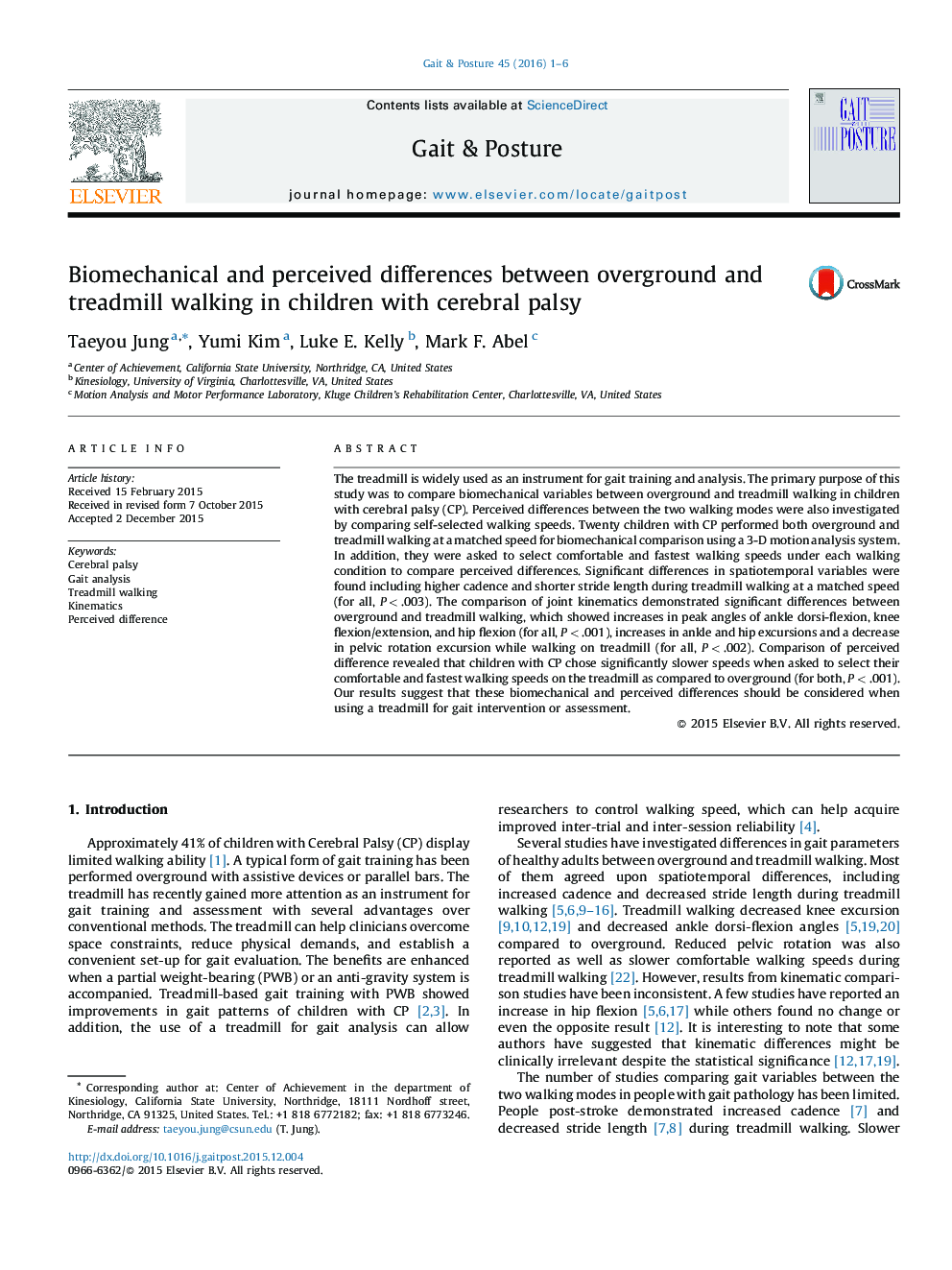| کد مقاله | کد نشریه | سال انتشار | مقاله انگلیسی | نسخه تمام متن |
|---|---|---|---|---|
| 4055975 | 1603850 | 2016 | 6 صفحه PDF | دانلود رایگان |
• We compared overground and treadmill walking in children with CP.
• We analyzed gait variables at a matched walking speed.
• Self-selected walking speeds were examined for perceived differences.
• Treadmill walking altered spatiotemporal and kinematic variables.
• Children with CP showed perceived differences during treadmill walking.
The treadmill is widely used as an instrument for gait training and analysis. The primary purpose of this study was to compare biomechanical variables between overground and treadmill walking in children with cerebral palsy (CP). Perceived differences between the two walking modes were also investigated by comparing self-selected walking speeds. Twenty children with CP performed both overground and treadmill walking at a matched speed for biomechanical comparison using a 3-D motion analysis system. In addition, they were asked to select comfortable and fastest walking speeds under each walking condition to compare perceived differences. Significant differences in spatiotemporal variables were found including higher cadence and shorter stride length during treadmill walking at a matched speed (for all, P < .003). The comparison of joint kinematics demonstrated significant differences between overground and treadmill walking, which showed increases in peak angles of ankle dorsi-flexion, knee flexion/extension, and hip flexion (for all, P < .001), increases in ankle and hip excursions and a decrease in pelvic rotation excursion while walking on treadmill (for all, P < .002). Comparison of perceived difference revealed that children with CP chose significantly slower speeds when asked to select their comfortable and fastest walking speeds on the treadmill as compared to overground (for both, P < .001). Our results suggest that these biomechanical and perceived differences should be considered when using a treadmill for gait intervention or assessment.
Journal: Gait & Posture - Volume 45, March 2016, Pages 1–6
